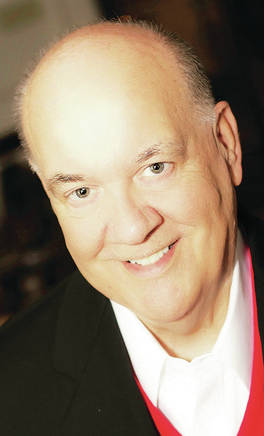
It is only a six-foot circle of wood.
The rough piece of old oak from the rural Clinch Mountains of Tennessee had called a historic church in Nashville home for more than 100 years, and the stories told, the songs sung, and the lives lived on this piece of wood is truly the stuff life is made of.
In 1892, carpenters in bib overalls with hammers and nails built the floor in one of the largest buildings in Nashville.
Thomas Ryman, a Nashville businessman, constructed the red brick building for his friend, evangelist the Rev. Sam Jones. The Rev. Jones preached the gospel, fire and brimstone, and the Ten Commandments every Sunday morning.
“Enter through the narrow gate. For wide is the gate and broad is the way that leads to destruction, and many enter through it. But small is the gate and narrow the way that leads to life, and only a few find it,” the Rev. Jones preached with his rich baritone voice projected throughout the building.
In 1904, Mr. Ryman passed away, and his admirers decided to rename the building The Ryman Auditorium, now commonly called simply, The Ryman.
During the week the building, because of its fine acoustics, hosted community gatherings, political rallies and numerous entertainment events including operas and theatrical productions.
Across town in a building on Old Hillsborough Pike, which now houses the Belmont Theatre, another event was taking place.
Ninety-five years ago on the night of Nov. 28, 1925, two days after Thanksgiving, an announcer introduced a 70-year-old fiddle player, “Uncle” Jimmy Thompson, as the first performer on the newly created “WSM Barn Dance,” later dubbed “The Grand Ole Opry,” broadcast over the Nashville radio station WSM.
No one ever fathomed that the “corny” country radio program and the Ryman church would join together to form a durable marriage that would last for more than 31 years. However, people stood in line for hours in the freezing rain, snow and blistering sun for tickets.
“It is rather warm tonight, and it isn’t even summertime yet,” one man in line said one night to no in particular.
Elvis Presley appeared only once on the Grand Ole Opry. He was there in 1954 and was told by an Opry manager, “You need to go back to Memphis and return to driving a truck.”
Needless to say, Elvis was offended and never returned to the Opry.
Johnny Cash’s experience wasn’t much better. He appeared early in his career and after a day of over-indulgence he decided the stage footlights were too bright and took a microphone stand to them, breaking every light bulb.
Another artist that ran afoul of the Opry’s stringent standards was Jerry Lee Lewis, who made his first and only appearance on the show on Jan. 20, 1973. Lewis was given two conditions for his appearance – no rock and roll and no profanity – and he proceeded to disregard both. He immediately began cursing and playing his rock and roll hits.
The Opry was not forgiving of the Sun Record alumni.
As an “old-timer” reminds us, “Choose a job you love, and you will never have to work a day in your life.”
Dennis McCall, a cousin to my late brother Jack’s wife, Nancy Haley, followed that advice. Dennis, an accomplished bassist, guitarist and singer, came from a talented musical family in New Jasper, Ohio.
Dennis McCall was the alto harmony voice in the Carol Lee Singers, who performed on the Grand Ole Opry for 35 years. He sang backup for just about every country music artist on the Grand Ole Opry in Nashville.
Dennis told about the time Carol Lee, as a young girl, danced with Elvis backstage at the Opry, and not until 30 years later had she found out he wanted a date with her. Elvis had asked her father if he could date Carol, but her father replied, “I don’t think so, son.”
In 1974, six workers worked on their hands and knees, carefully cutting the perfectly measured oak, tenderly lifting it from its hallowed place where history was made every Friday and Saturday, and moving to its new home in Opryland off Briley Parkway.
In order to carry on the tradition of the show’s run at the Ryman, the six-foot circle of oak wood was inlaid into center stage at the new venue, where artists on stage traditionally stood on the circle as they performed.
Once, when Brenda and I visited the Opry, Dennis told us the circle in the middle of the stage reminded him of life and how all things come full circle.
“I have seen and worked with the biggest stars in country music,” Dennis said. “But when life throws me a curve, I go stand in the circle for a few minutes. It always puts life back into perspective.”
And quite a unique circle of perspective it is.
Pat Haley is a Clinton County commissioner and former Clinton County sheriff.


